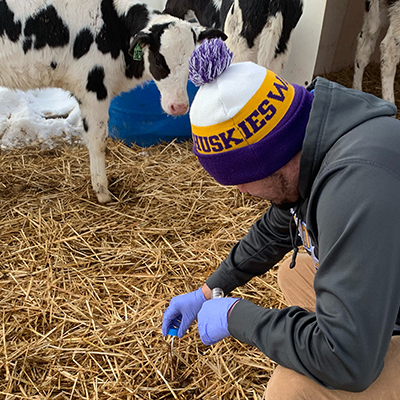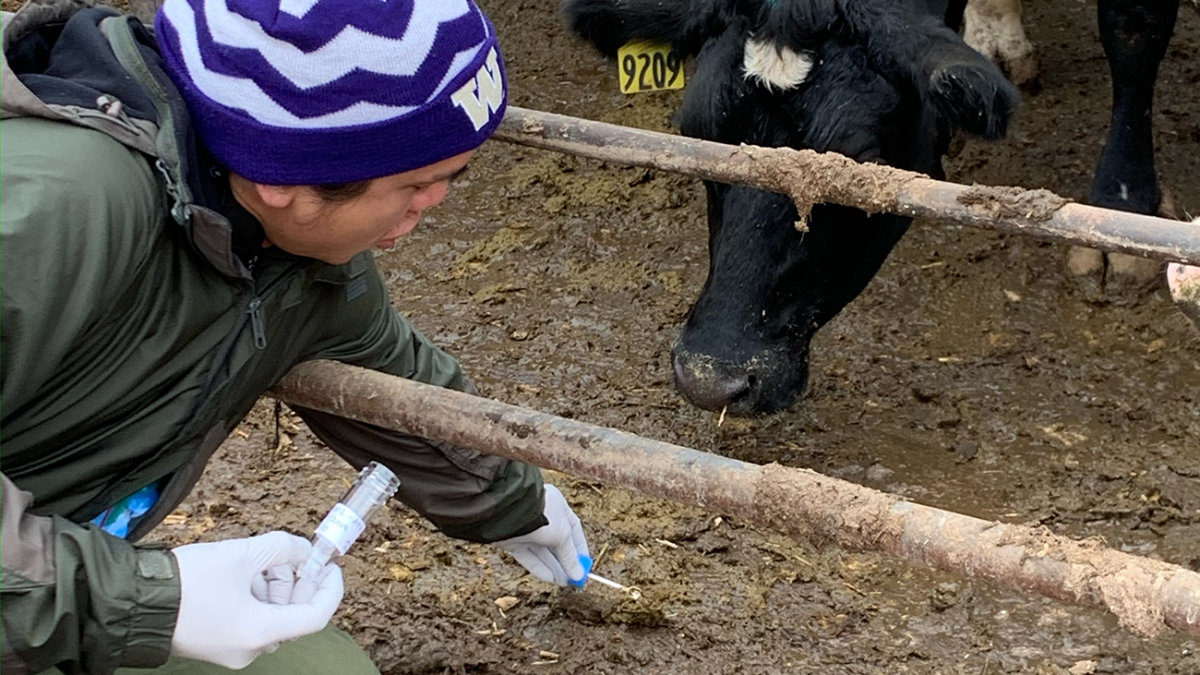
Workers on dairy farms are exposed to a variety of pollutants on the job, including dust and microbial toxins. But do these exposures make workers more susceptible to asthma and allergies, or could they have a protective effect against these ailments?
A new study in the Journal of Agromedicine led by scientists at the UW Department of Environmental & Occupational Health Sciences (DEOHS) provides some answers.
The good news: dairy workers in the study had similar levels of respiratory health, including rates of asthma, as participants in the community who didn’t work on dairy farms.
However, several dairy workers in the study showed signs of allergy to cows, whereas none of the community participants did.
The study suggests that dairy workers and producers should be aware of allergen exposures on farms and take measures to try to prevent them, said DEOHS Professor Peter Rabinowitz, lead author of the study and director of the UW Center for One Health Research.
“One thing that could be done in the future would be to ask workers, on a periodic basis, whether they have noticed any allergic symptoms, such as runny nose or eyes or skin rash,” Rabinowitz said. “Dust control may also reduce worker exposure to asthma.”
The study was funded by the Pacific Northwest Agricultural Safety and Health (PNASH) Center, part of DEOHS.

"Recruiting dairy owners and workers was a fun process and working with them was an amazing experience," said Pablo Palmández, agricultural research and safety extensionist at the PNASH Center, who managed the team of field researchers as well as data collection for the project.
Breath tests with dairy workers and community members
The research team carried out tests of respiratory function and analyzed certain antibodies in the blood of 42 dairy farm workers and 40 community members who did not work on dairy farms.
Most respiratory symptoms were similar among the two groups, and the participants also self-reported a similar prevalence of asthma. One exception was that dairy workers reported more shortness of breath than control participants.
Average antibody levels were similar between the two groups, but only dairy workers showed elevated antibodies specific to cows. Of the four dairy workers with elevated cow-antibody levels, two also showed increased exhaled nitric oxide, a marker of lung inflammation.

Supporting workers, farms and the public

The UW and PNASH are working on a wide range of health and safety issues on dairy farms in association with dairy organizations and Washington State University.
“We think this is producing benefits for the workers, the farms and the public,” Rabinowitz said.
They also plan to continue to work with farms in Washington state on programs to prevent and control COVID-19 infection among workers.
In addition to protecting workers’ health, “having health and safety programs for workers on dairy farms can lead to reduced turnover and loss of productivity due to illness and injury,” Rabinowitz said.
The research team is also investigating potential differences in the microbiome of dairy workers and control participants, and what impact that might have on people’s health.
Coauthors of the study include DEOHS researchers Jose Carmona, Marine deMarcken, Pauline Trinh, Lauren Frisbie, Vickie Ramirez, Pablo Palmández, Sverre Vedal and Coralynn Sack.




